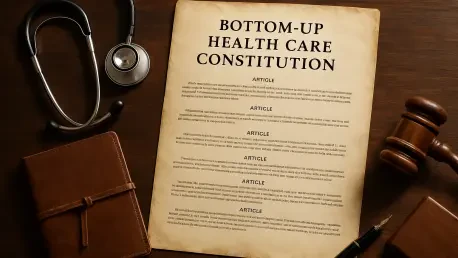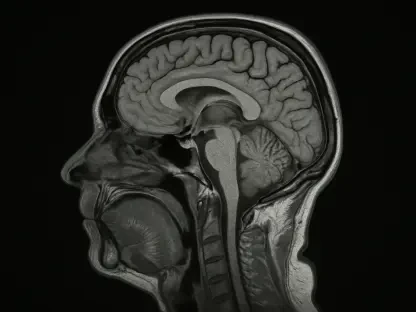Public outrage thrives on abstractions, but the minute health care policy meets a concrete trade-off, debate hardens, language overheats, and any workable compromise evaporates into a haze of moral accusations and budget slogans that reward noise over clarity and courage. The cycle favors grand announcements and retrofitted talking points while locking out the people who see the damage up close: practicing physicians navigating prior authorizations, opaque pricing, misaligned incentives, and rules that contradict clinical logic. The result is a system so tangled that small fixes either dissipate or invite gaming, and the conversation never escapes the surface. Yet across exam rooms, operating suites, and imaging labs, a quiet consensus has formed around what actually breaks care. The path forward may not be another blueprint from a podium but a process that invites working clinicians to define first principles, with AI used not as a policy oracle but as a translator of scale.
The Broken Conversation
Why Nuance Never Survives
In health care, specificity is political kindling: outline a policy that trims low-value services or redirects funds toward higher-yield care, and the debate quickly casts it as heartless rationing rather than responsible triage built on evidence and outcomes. Politicians react rationally to that incentive by trafficking in headlines while withholding substance, because the details are where narratives get weaponized before the ideas mature. Media attention favors the immediate and the dramatic, so promises become the currency while measurable trade-offs are treated like traps. Oversimplified claims about “coverage for all” or “freedom to choose” sound humane until they collide with the arithmetic of finite resources and the messy distribution of benefit, where hard choices about value become unavoidable.
Moreover, that surface-level sparring rewards a strange kind of policy theater: proposals designed to survive a news cycle rather than perform in a clinic. Incremental fixes—tighter authorization rules here, bonus payments there—briefly move the needle but snap back because the underlying architecture shifts the burden rather than removing it. Administrative layers multiply to manage prior administrative layers, creating a Rube Goldberg machine that confuses payers, providers, and patients alike. That “confuse-opoly” structure breeds cost without accountability, allowing every stakeholder to claim efficiency gains while the overall experience deteriorates. Without a reset that clarifies goals and simplifies pathways, good-faith efforts suffocate inside the very complexity they aim to tame, leaving exhausted clinicians and skeptical voters to wonder why nothing sticks.
The Missing Voice at the Center
Public rhetoric elevates the patient–physician relationship as the moral core of health care, yet those same physicians are told to leave system design to economists, actuaries, or consultants who rarely face the hallway consequences of a misaligned rule. That dismissal feeds cynicism among clinicians who have watched reimbursement formulas reward volume over value, malpractice fear reshape choices, and documentation demands crowd out time with patients. Internal disagreements then get amplified in policy circles: specialty turf wars and scope-of-practice battles are framed as self-interest rather than competing visions of safety, training, and accountability. The result is a fractured message that weakens the case for clinician-led reform even where common ground clearly exists.
Across specialties, however, there is notable congruence on the biggest pain points: administrative drag that adds no clinical value, liability exposure that distorts behavior, reimbursement models that reward the wrong tasks, and algorithmic decision rules in prior authorization that operate as black boxes. Those shared frustrations are not mere anecdotes; they are indicators that incentives and workflows have drifted away from bedside logic. What physicians bring to policy is not partisan preference but a continuous audit of what fails when rules meet reality. Elevating that perspective does not mean ignoring conflicts of interest; it means structuring a process that contains them, making overlaps visible, and converting professional experience into a coherent set of principles that policymakers can neither dismiss nor easily capture.
A Bottom-Up Remedy
Crowdsource Clinician Wisdom
A practical starting point is breadth with guardrails: invite physicians with at least five post-training years to submit up to five concrete reforms, ensuring the input reflects lived practice rather than theoretical modeling. That threshold captures enough exposure to system friction while keeping the focus on those likely to practice under any new framework. By including diverse settings—academic centers, community hospitals, rural clinics, independent groups—the initiative would surface regional and specialty variation without letting any one faction dominate. The goal is not to crown winners but to collect patterns, especially where pain points recur across very different care environments.
To keep the input actionable, submissions would require a brief statement of the problem, the proposed change, the intended beneficiaries, and the anticipated trade-offs. Space for evidence—claims data, peer-reviewed studies, operational metrics—would encourage proposals grounded in outcomes rather than slogan-level aims. Guardrails would also deter narrow rent-seeking by asking contributors to disclose potential conflicts and to articulate how the idea serves patients beyond their own practice. While retirees offer valuable perspective, priority would go to clinicians currently navigating today’s constraints, since their proposals shoulder immediate consequences. This designed inclusivity is not a plebiscite; it is a way to capture the clinician commons so that policymaking starts with the reality of care delivery.
Let AI Do the Heavy Lifting
An open call would flood the process with overlapping ideas—tort reform, prior authorization overhaul, payment alignment, transparent pricing, scope clarity, and waste reduction. This is where AI becomes essential scaffolding rather than a substitute decision-maker. Modern language models can cluster semantically similar submissions, identify shared rationales, and flag contradictions, condensing thousands of entries into families of themes without erasing nuance. Deduplication reduces noise while topic modeling highlights the frequency and intensity of concern, producing a ranked map of priorities that reflects where clinicians converge or diverge. That synthesis would be auditable: each theme links back to representative submissions.
To protect integrity, the pipeline would include bias checks and provenance tracking. Models trained on health policy corpora and clinical literature can be tuned to avoid privileging verbose proposals over clear but concise ones, while safeguards prevent a handful of coordinated campaigns from skewing the output. Human stewards—methodologists and practicing physicians—would audit edge cases, ensure minority but meritorious views remain visible, and verify that clinical terminology is preserved rather than smoothed into generic language. Transparency is the point; the AI would make the scale legible, not determinative. The outcome is a concise, evidence-framed shortlist that policymakers and the public can interrogate, grounding debate in patterns of clinician consensus rather than sporadic testimonies or staged hearings.
Draft the Health Care Constitution—In Public
With priorities distilled, a representative drafting group of still-practicing clinicians, along with payment experts, patient advocates, and operations leaders, could translate the map into a principles-first blueprint. Call it a Health Care Constitution: a compact that sets guardrails before statutes, defining acceptable trade-offs, transparency standards, liability norms, and default payment logic. The document would not prescribe every rate or rule; it would articulate a framework against which any proposal could be tested—does it simplify access, align incentives with outcomes, and sustain accountability without burying clinicians in compliance theater? Public release of the aggregated input and the draft would shift the political incentive from vagueness to justification.
Crucially, the process would have tied lawmakers to a visible record of clinician consensus, making deviations explainable in the open. Iterations, comment periods, and data-backed revisions would have created a living charter that resisted the system’s drift back into complexity by requiring clear rationales for added layers. Implementation steps—pilot zones, sunset clauses, real-time metrics—were framed as safeguards rather than hedges, ensuring that course corrections happened fast and in public. The effort concluded with a workable path: start broad, compress responsibly with AI, draft principles with practicing physicians at the helm, and bind policy to those principles so that future reforms competed on clarity and outcomes instead of sound bites and stall tactics.









